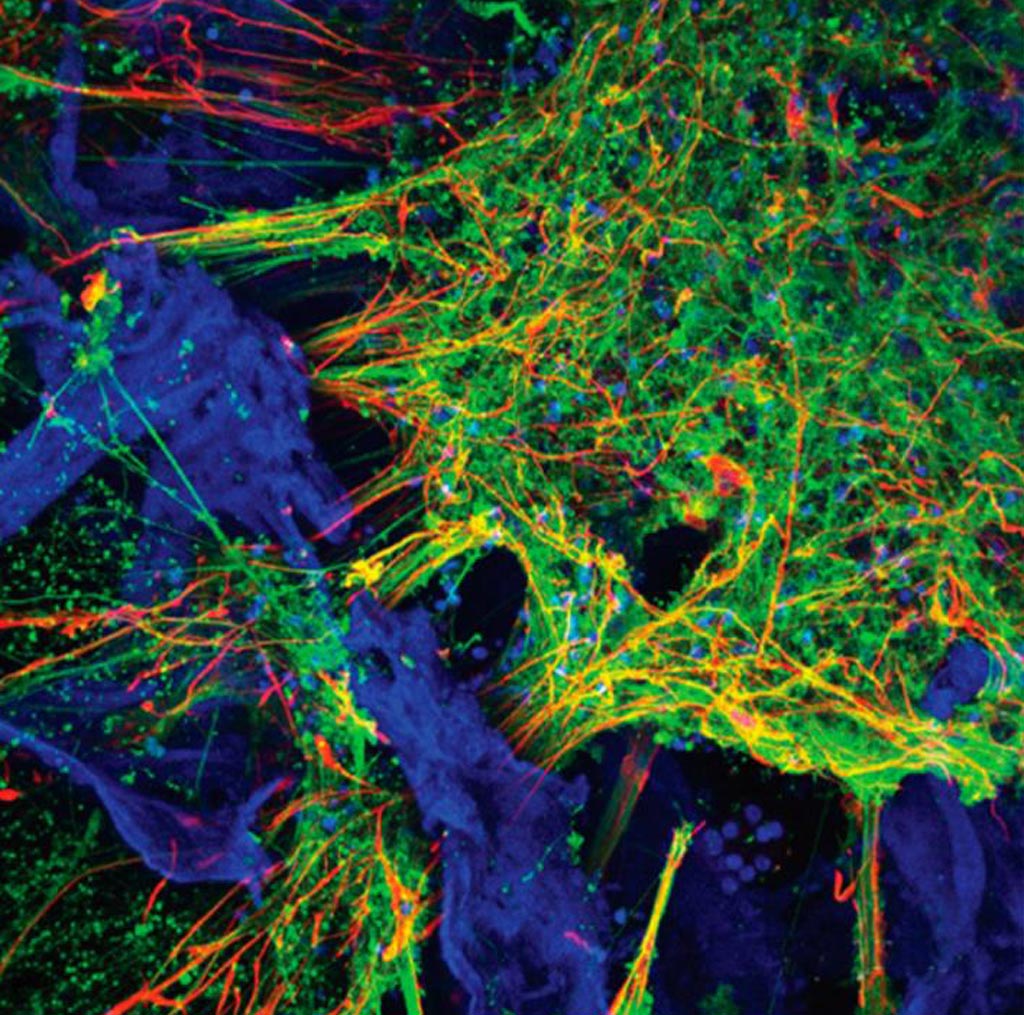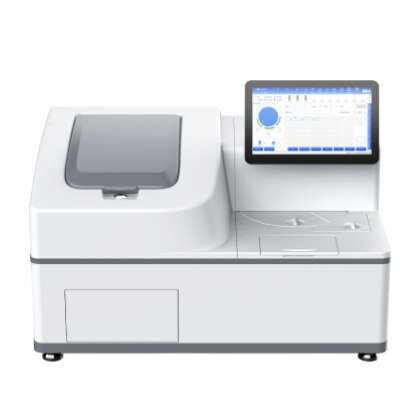Functional 3D Neural Network Models Generated from Stem Cells
By LabMedica International staff writers
Posted on 01 Nov 2018
A team of biomedical engineers worked with human induced pluripotent stem cells (iPSCs) to develop three-dimensional (3D) in vitro human neural network model systems.Posted on 01 Nov 2018
Three-dimensional in vitro cell and tissue culture models allow for the exploration of mechanisms of organ development, cellular interactions, and disease progression within defined environments. Investigators at Tufts University (Boston, MA, USA) used iPSCs from normal and diseased individuals to populate a three-dimensional matrix of silk protein and collagen to create such models, which would mimic structural and functional features of the brain and demonstrate neural activity.

Image: Confocal image of fluorescent markers indicating presence of neurons (green), astrocytes (red) and the silk protein-collagen matrix (blue). Image field is 460 microns (Photo courtesy of Tufts University).
The current work was based on previous studies where primary rodent neurons were successfully grown in a similar three-dimensional system. The model was adapted to human induced pluripotent stem cells, allowing for a more direct exploration of the human condition.
The investigators reported in the October 1, 2018, online edition of the journal ACS Biomaterials Science & Engineering that these tissue cultures comprised diverse cell populations, including neurons and astroglial cells, interacting in three-dimensions and exhibited spontaneous neural activity confirmed through electrophysiological recordings and calcium imaging over at least nine months. Compared to growing and culturing cells in two dimensions, the three-dimensional matrix produced a significantly more complete mix of cells found in neural tissue, with the appropriate morphology and expression of receptors and neurotransmitters.
This approach, which was tested with stem cells derived from healthy individuals as well as from Alzheimer’s and Parkinson’s disease patients, allowed for the direct integration of pluripotent stem cells into the three-dimensional construct, bypassing early neural differentiation steps. This streamlined process, in combination with the longevity of the cultures, provided a system that could be manipulated to support a variety of experimental applications such as investigating drug targets in neurodegenerative diseases.
"We found the right conditions to get the iPSCs to differentiate into a number of different neural subtypes, as well as astrocytes that support the growing neural networks," said senior author Dr. David L. Kaplan, professor of biomedical engineering at Tufts University. "The silk-collagen scaffolds provide the right environment to produce cells with the genetic signatures and electrical signaling found in native neuronal tissues."
Related Links:
Tufts University







 Analyzer.jpg)





